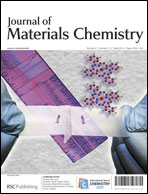We have demonstrated that 3-aryl-3-(α-naphthalene)-3H-naphtho[2,1-b]pyrans photochromic system shows large optical density at photosteady state at ambient temperature. In this paper, we describe a strategy for modifying this photochromic system with a fast fading speed in both solution and in a rigid polymer matrix. It is found that the nature and position of the substituted groups attached to the aryl moiety at the 3-position play a key role in determining the fading speed of 3-aryl-3-(α-naphthalene)-3H-naphtho[2,1-b]pyrans at ambient temperature. The fading speed of colored forms increase significantly when the electron-donating groups are attached to the para-position of aryl moieties at the 3-position. Further investigations find that (1) a strong electron-donating group is better than a weak electron-donating group for a fast fading speed, (2) an electron-donating group attached to the para-position of the naphthalene ring is better than one attached to the para-position of a benzene ring, and (3) with electron-donating groups at both para-positions of the naphthalene and benzene rings, the fading speed is dramatically increased in both solution and in the rigid polymer matrix.
![Graphical abstract: Modification of a photochromic 3-aryl-3-(α-naphthalene)-3H-naphtho[2,1-b]pyran system with a fast fading speed in solution and in a rigid polymer matrix](/en/Image/Get?imageInfo.ImageType=GA&imageInfo.ImageIdentifier.ManuscriptID=C1JM10139K&imageInfo.ImageIdentifier.Year=2011)
You have access to this article
 Please wait while we load your content...
Something went wrong. Try again?
Please wait while we load your content...
Something went wrong. Try again?
![Graphical abstract: Modification of a photochromic 3-aryl-3-(α-naphthalene)-3H-naphtho[2,1-b]pyran system with a fast fading speed in solution and in a rigid polymer matrix](/en/Image/Get?imageInfo.ImageType=GA&imageInfo.ImageIdentifier.ManuscriptID=C1JM10139K&imageInfo.ImageIdentifier.Year=2011)

 Please wait while we load your content...
Please wait while we load your content...